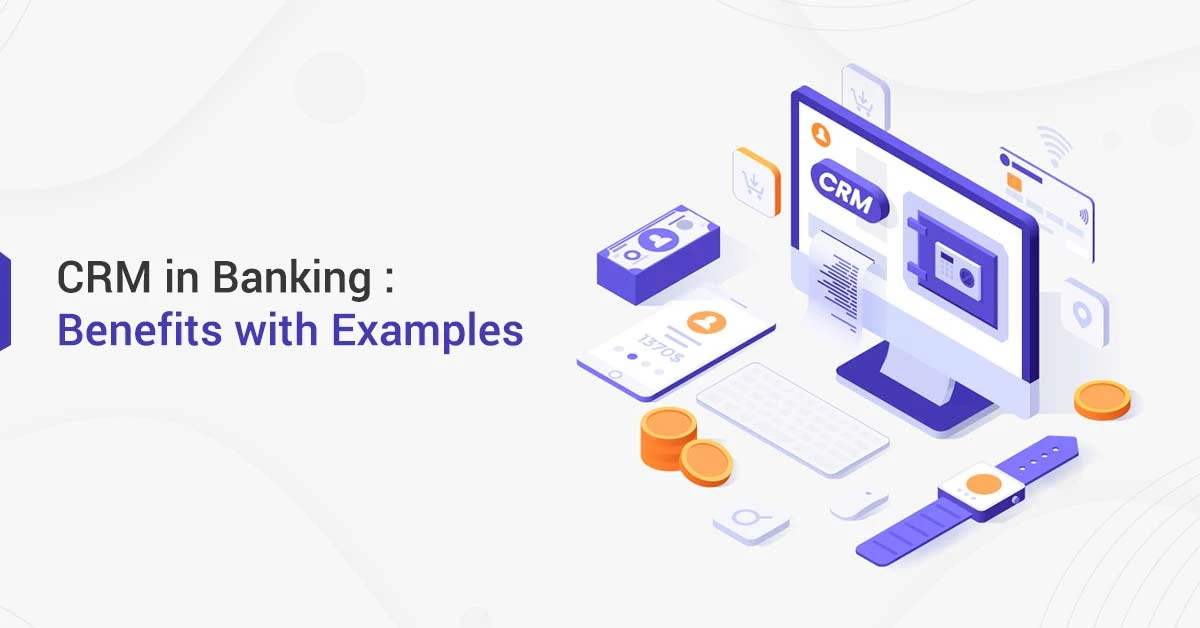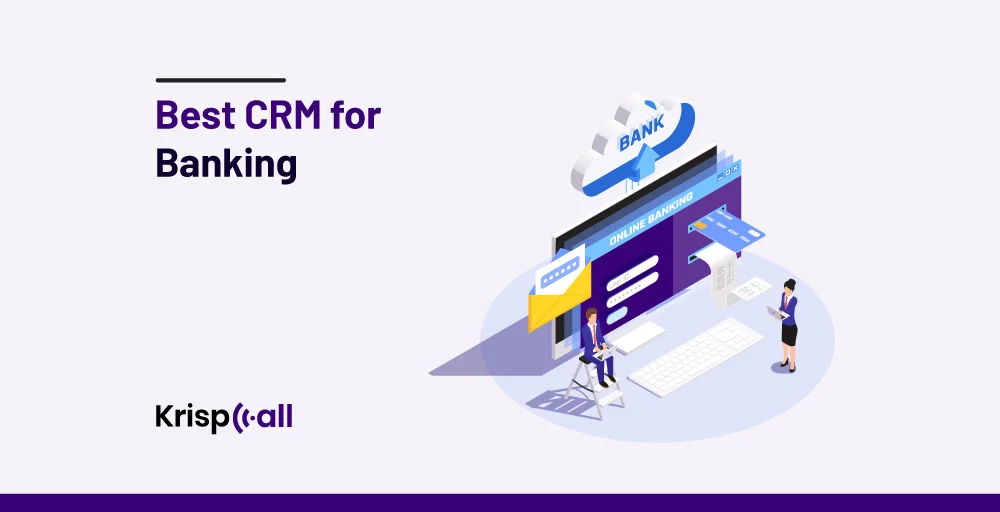Best CRM for banks is crucial for modern financial institutions. Effective customer relationship management is no longer a luxury but a necessity for banks of all sizes, from small community banks to large multinational corporations. This guide explores the critical features, vendor comparisons, and implementation strategies to help banks select and deploy the optimal CRM solution, ultimately improving customer service, operational efficiency, and regulatory compliance.
The unique needs of various banking departments – retail, private banking, commercial lending – demand a CRM system capable of handling diverse customer interactions and data. This necessitates careful consideration of factors like data security, regulatory compliance (e.g., GDPR, CCPA), and seamless integration with existing core banking systems. We will delve into these aspects, offering a comprehensive overview to assist banks in making informed decisions.
Defining Banking CRM Needs
Selecting the right CRM for a bank requires a deep understanding of the institution’s specific needs. Different departments within a bank have unique operational requirements, and a one-size-fits-all approach is unlikely to be successful. Furthermore, stringent regulatory compliance is paramount, significantly impacting CRM selection and implementation.
Unique CRM Requirements Across Bank Departments
Retail banking, private banking, and commercial lending each demand distinct CRM functionalities. Retail banking, focusing on high-volume, relatively low-value transactions, needs a CRM optimized for efficient onboarding, streamlined account management, and effective marketing campaigns targeted at mass audiences. Private banking, conversely, requires a highly personalized CRM capable of managing complex portfolios, providing wealth management tools, and fostering strong client relationships built on trust and personalized service.
Commercial lending demands a CRM that supports the entire loan lifecycle, from origination and underwriting to servicing and recovery, including robust credit risk assessment and reporting capabilities.
Regulatory Compliance in Banking CRM Selection
Regulatory compliance is non-negotiable in banking. CRMs must adhere to strict data privacy regulations (like GDPR and CCPA), security standards (like PCI DSS), and reporting requirements specific to each jurisdiction. The chosen CRM should be demonstrably compliant and offer features to assist in meeting these obligations, including data encryption, access controls, audit trails, and reporting tools that facilitate regulatory audits.
Failure to comply can result in significant financial penalties and reputational damage.
Key Features of an Effective Banking CRM
A successful banking CRM must possess several key features. These include robust customer data management capabilities, providing a single, unified view of each customer across all touchpoints. Integrated communication tools, such as email, phone, and chat, are crucial for seamless interaction. Workflow automation streamlines processes, improving efficiency and reducing manual effort. Advanced analytics and reporting provide valuable insights into customer behavior and operational performance, enabling data-driven decision-making.
Finally, strong security features are vital to protect sensitive customer data and maintain regulatory compliance.
CRM Needs Across Different Bank Sizes
| Bank Size | Required Features | Integration Needs | Budget Considerations |
|---|---|---|---|
| Small Bank (e.g., < 100 employees) | Basic customer data management, contact management, basic reporting, email integration. | Integration with core banking system, potentially accounting software. | Lower budget, likely opting for cloud-based solutions with subscription models. |
| Medium Bank (e.g., 100-500 employees) | Advanced customer data management, workflow automation, sales force automation, advanced reporting and analytics, marketing automation. | Integration with core banking system, accounting software, loan origination systems, potentially customer relationship management (CRM) specific add-ons. | Moderate budget, allowing for more comprehensive features and potential on-premise or hybrid solutions. |
| Large Bank (e.g., > 500 employees) | Highly scalable and customizable CRM, comprehensive data management, advanced analytics and reporting, integration with multiple internal and external systems, robust security features, support for multiple departments and geographies. | Integration with multiple core banking systems, diverse third-party applications, potentially custom development to address specific needs. | Higher budget, justifying investment in sophisticated and highly customized solutions, often requiring dedicated IT support. |
Top CRM Software Features for Banks: Best Crm For Banks

A robust CRM system is crucial for banks to manage customer relationships effectively, improve operational efficiency, and enhance profitability. Choosing a system with the right features is paramount for success. This section details essential features that any top-tier banking CRM should possess.
Integrated Customer Data Management
Integrated customer data management is the cornerstone of a successful banking CRM. It involves consolidating all customer information – from account details and transaction history to interaction notes and marketing preferences – into a single, unified view. This eliminates data silos and provides a 360-degree perspective of each customer. The benefits are significant: improved customer service through personalized interactions, more accurate risk assessment, and targeted marketing campaigns leading to increased customer retention and acquisition.
For example, a bank can leverage integrated data to identify high-value customers and offer them tailored financial products or services, leading to increased revenue and customer loyalty. The ability to quickly access a complete customer profile enables staff to resolve queries efficiently and build stronger relationships.
Robust Security Features
Given the sensitive nature of banking data, robust security is non-negotiable. A banking CRM must incorporate multiple layers of security, including encryption both in transit and at rest, access controls with granular permission settings, and regular security audits. Multi-factor authentication (MFA) is also essential to prevent unauthorized access. Compliance with industry regulations such as GDPR and CCPA is vital, ensuring the protection of customer privacy and data integrity.
Failure to implement these measures can lead to significant financial losses, reputational damage, and legal repercussions. A breach of customer data could result in substantial fines and a loss of customer trust, severely impacting the bank’s operations.
Reporting and Analytics Capabilities
Effective reporting and analytics are crucial for measuring the success of CRM initiatives and making data-driven decisions. A banking CRM should offer a comprehensive suite of reporting tools, allowing banks to track key performance indicators (KPIs) such as customer acquisition cost, customer lifetime value, and customer satisfaction. The ability to generate custom reports and dashboards is also essential for tailoring insights to specific business needs.
Advanced analytics capabilities, such as predictive modeling, can help banks anticipate customer behavior, identify potential risks, and proactively address customer needs. For instance, analyzing customer transaction data can help identify patterns indicating potential fraud, allowing the bank to take preventive measures.
Client Onboarding Workflow Example
Let’s consider a hypothetical workflow for onboarding a new client using a banking CRM:
1. Initial Contact
A potential client contacts the bank via phone, email, or online form. This interaction is logged in the CRM, capturing details such as contact information, the reason for contact, and any initial needs expressed.
2. Lead Qualification
The CRM automatically routes the lead to the appropriate department based on pre-defined rules. A relationship manager reviews the information and qualifies the lead, assessing the potential for a successful business relationship.
3. Documentation and KYC
The relationship manager uses the CRM to guide the client through the necessary documentation and Know Your Customer (KYC) procedures. All documents are securely stored within the client’s profile in the CRM.
4. Account Setup
Once KYC checks are completed, the relationship manager uses the CRM to initiate the account setup process. This includes creating the account, assigning a unique identifier, and configuring access permissions.
5. Welcome and Onboarding
The CRM triggers automated welcome emails and onboarding materials to the new client, providing essential information and support. The relationship manager schedules a follow-up call to address any questions or concerns.
6. Ongoing Relationship Management
The CRM continues to track all interactions with the client, facilitating ongoing communication and personalized service. The relationship manager uses the CRM to monitor account activity, identify potential needs, and offer relevant financial products and services.
CRM Software Vendor Comparison

Choosing the right CRM for a bank requires careful consideration of various factors, including functionality, scalability, integration capabilities, and cost. This section compares three leading CRM vendors, analyzes the cloud versus on-premise debate, and examines successful bank CRM implementations.
Vendor Feature and Pricing Comparison
A thorough comparison of CRM vendors is crucial for effective decision-making. The following Artikels key features and pricing models for Salesforce Financial Services Cloud, Microsoft Dynamics 365 for Finance, and Pega Customer Service. Pricing can vary significantly based on the number of users, modules selected, and customization needs. It’s recommended to request quotes directly from vendors for accurate pricing information.
- Salesforce Financial Services Cloud:
- Features: Comprehensive suite designed for financial institutions, including wealth management, lending, and customer service modules. Strong analytics and reporting capabilities. Robust integration with other Salesforce products. Excellent mobile accessibility.
- Pricing: Typically subscription-based, with pricing varying significantly depending on user count and features.
- Strengths: Extensive functionality, strong ecosystem, high scalability.
- Weaknesses: Can be complex to implement and expensive, requiring significant upfront investment and ongoing maintenance.
- Microsoft Dynamics 365 for Finance:
- Features: Integrated with other Microsoft products like Office 365 and Power BI, offering seamless data flow and reporting. Strong focus on financial management and regulatory compliance. Provides tools for relationship management and customer service.
- Pricing: Subscription-based, with various licensing options available.
- Strengths: Good integration within the Microsoft ecosystem, relatively user-friendly interface.
- Weaknesses: May lack some of the specialized features offered by Salesforce Financial Services Cloud, particularly in wealth management.
- Pega Customer Service:
- Features: Focuses on case management and customer service automation. Provides tools for personalized customer interactions and efficient resolution of issues. Strong capabilities for omnichannel support.
- Pricing: Typically a subscription model with pricing dependent on user volume and functionality.
- Strengths: Excellent for streamlining customer service processes and improving customer satisfaction.
- Weaknesses: Might not be as comprehensive as other options for broader CRM needs beyond customer service.
Cloud-Based vs. On-Premise CRM Solutions for Banks
The choice between cloud-based and on-premise CRM solutions depends heavily on a bank’s specific needs, infrastructure, and security considerations.
- Cloud-Based CRM: Offers scalability, accessibility, and reduced IT infrastructure costs. Regular updates and maintenance are handled by the vendor. However, security and data privacy concerns require careful consideration and vendor due diligence. Examples include Salesforce Financial Services Cloud and Microsoft Dynamics 365.
- On-Premise CRM: Provides greater control over data security and customization options. However, it requires significant upfront investment in hardware and IT infrastructure, along with ongoing maintenance and support. This option offers more control but higher initial and ongoing costs.
Successful Bank CRM Implementations and Challenges
Several banks have successfully implemented CRM systems to improve customer relationships and operational efficiency. For example, a large multinational bank successfully integrated a cloud-based CRM system to centralize customer data, resulting in improved customer service and cross-selling opportunities. However, they faced initial challenges in data migration and user training. Another regional bank overcame integration difficulties with legacy systems by implementing a phased approach, prioritizing key functionalities and gradually integrating other systems.
These examples highlight the importance of thorough planning, change management, and robust data migration strategies for successful CRM implementations.
Integration and Customization

A successful banking CRM isn’t just about the software itself; it’s about how seamlessly it integrates with existing systems and adapts to the unique needs of the bank. Effective integration minimizes data silos, streamlines workflows, and enhances the overall customer experience. Customization, while offering tailored functionality, requires careful consideration of its potential impact on maintenance and future upgrades.Seamless integration with a bank’s core systems is paramount for operational efficiency and data accuracy.
A fragmented system, where data resides in disparate locations, leads to inconsistencies, delays, and a poor customer experience. Conversely, a well-integrated CRM provides a single source of truth, improving decision-making and fostering a more unified view of the customer.
Core Banking System Integration
Integrating a CRM with a core banking system (CBS) allows for real-time access to crucial customer data, such as account balances, transaction history, and loan details. This eliminates the need for manual data entry and reduces the risk of errors. For instance, a customer service representative can instantly view a customer’s complete financial profile within the CRM, providing a more personalized and efficient service.
The integration typically involves using APIs to exchange data between the CRM and the CBS. A poorly executed integration can, however, lead to performance issues and data inconsistencies if not properly managed and tested. Thorough planning and robust testing are crucial to mitigate these risks.
Customizing CRM Solutions for Banks
Customization allows banks to tailor the CRM to their specific processes and workflows. This might involve adding custom fields, creating unique reports, or integrating with specialized banking applications. While customization offers significant benefits in terms of functionality and usability, it also introduces complexities. Customizations can make future upgrades more challenging and increase the cost of maintenance. Banks must carefully weigh the benefits of customization against the potential drawbacks before embarking on significant modifications.
A well-defined scope and a phased approach to customization can help manage these risks. For example, a bank might initially focus on customizing the reporting functionality before tackling more complex integrations.
The Role of APIs in CRM Integration
Application Programming Interfaces (APIs) are the backbone of CRM integration. They act as intermediaries, allowing different software systems to communicate and exchange data. APIs enable the CRM to access and update information in other bank applications, such as the CBS, loan origination systems, and customer service platforms. Different API types (REST, SOAP, etc.) offer various functionalities and levels of complexity.
The choice of API will depend on the specific needs of the bank and the capabilities of the CRM and other systems involved. A well-documented and robust API is essential for successful integration. Banks should prioritize CRM vendors that offer comprehensive and well-supported APIs.
Integrating CRM with a Customer Service Platform: A Step-by-Step Process
Integrating a CRM with a bank’s customer service platform enhances the customer service experience by providing agents with a complete view of the customer’s interactions and history. The integration process typically involves the following steps:
- Assessment and Planning: Define the scope of integration, identify the data points to be exchanged, and select the appropriate integration method (e.g., real-time, batch).
- API Configuration: Configure the APIs on both the CRM and the customer service platform to enable data exchange. This involves setting up authentication, defining data formats, and testing the connection.
- Data Mapping: Map the data fields between the two systems to ensure consistency and accuracy. This involves identifying corresponding fields in both systems and defining any necessary transformations.
- Testing and Validation: Thoroughly test the integration to ensure that data is exchanged correctly and that the system performs as expected. This includes unit testing, integration testing, and user acceptance testing.
- Deployment and Monitoring: Deploy the integrated system and continuously monitor its performance to identify and address any issues. This involves setting up monitoring tools and establishing procedures for resolving problems.
Implementation and Training

Successfully implementing a banking CRM involves a structured approach encompassing meticulous planning, efficient execution, and comprehensive staff training. A well-planned implementation minimizes disruption to daily operations and maximizes the return on investment. Ignoring these crucial aspects can lead to system underutilization, staff frustration, and ultimately, a failed CRM initiative.The implementation process is typically divided into distinct phases, each requiring careful management and resource allocation.
A successful implementation hinges on effective communication, collaboration between IT and business units, and a strong project management structure. Furthermore, robust training ensures that staff are equipped to utilize the system effectively, leading to improved productivity and customer service.
Implementation Steps
The implementation of a banking CRM typically follows these key steps: Project initiation, requirements gathering, vendor selection (which was covered previously), system configuration and customization, data migration, testing and quality assurance, deployment, and go-live support. Each stage requires meticulous planning and execution to ensure a smooth transition. For instance, data migration requires careful planning to minimize downtime and data loss.
A phased rollout approach, starting with a pilot group, is often preferred to mitigate risk and identify potential issues before a full-scale deployment.
Training Importance for Bank Staff
Comprehensive training is paramount to the successful adoption and utilization of a new banking CRM. Trained staff are more likely to use the system effectively, leading to improved customer service, increased efficiency, and better data management. Without proper training, the investment in a new CRM system may not yield the expected return. For example, inadequate training can result in staff relying on older, less efficient methods, negating the benefits of the new system.
This can lead to increased operational costs and decreased customer satisfaction.
Training Methods and Effectiveness
Various training methods cater to different learning styles and preferences. Online modules offer flexibility and self-paced learning, allowing staff to access training materials at their convenience. In-person workshops provide a more interactive environment, fostering collaboration and immediate feedback. Blended learning approaches, combining online and in-person training, often prove most effective, catering to diverse learning preferences and maximizing knowledge retention.
For example, online modules can cover foundational concepts, while in-person workshops focus on practical application and hands-on exercises. The choice of training method should align with the bank’s resources, staff demographics, and the complexity of the CRM system.
Sample Training Schedule
This sample training schedule Artikels a potential approach for a bank implementing a new CRM. The duration of each module can be adjusted based on the system’s complexity and staff experience.
| Module | Topic | Duration | Method |
|---|---|---|---|
| Module 1 | CRM System Overview and Navigation | 2 hours | Online Module + In-person Workshop |
| Module 2 | Customer Data Management | 3 hours | Online Module + In-person Workshop |
| Module 3 | Lead Management and Sales Processes | 4 hours | Online Module + In-person Workshop |
| Module 4 | Reporting and Analytics | 2 hours | Online Module + In-person Workshop |
| Module 5 | Advanced Features and Customization | 2 hours | In-person Workshop |
| Module 6 | Troubleshooting and Support | 1 hour | Online Module |
Future Trends in Banking CRM
The banking industry is undergoing a rapid transformation, driven by technological advancements and evolving customer expectations. Customer Relationship Management (CRM) systems are playing an increasingly crucial role in navigating this dynamic landscape, enabling banks to enhance operational efficiency, personalize customer interactions, and gain a competitive edge. Future trends in banking CRM will be shaped by the integration of emerging technologies and a relentless focus on delivering exceptional customer experiences.The integration of artificial intelligence (AI) and machine learning (ML) is fundamentally reshaping banking CRM.
These technologies are no longer futuristic concepts; they are actively being implemented to improve various aspects of banking operations.
AI and Machine Learning in Banking CRM
AI and ML are revolutionizing customer service, risk management, and fraud detection within banking CRM systems. For instance, AI-powered chatbots are providing instant, 24/7 customer support, handling routine inquiries and freeing up human agents to focus on more complex issues. Machine learning algorithms analyze vast amounts of customer data to identify patterns and predict customer behavior, enabling proactive engagement and personalized offers.
Furthermore, AI is enhancing fraud detection capabilities by identifying suspicious transactions in real-time, minimizing financial losses and protecting customer accounts. The use of AI-driven sentiment analysis tools allows banks to monitor customer feedback across various channels, enabling quicker responses to negative experiences and improved customer satisfaction. A concrete example is the implementation of AI-powered credit scoring models, which are becoming increasingly sophisticated and accurate in assessing credit risk, leading to faster and more efficient loan processing.
Enhanced Customer Experience and Personalization, Best crm for banks
Modern banking CRM systems are moving beyond simple customer data management. They are becoming powerful tools for creating highly personalized customer experiences. By leveraging AI and ML, banks can analyze customer data to understand individual preferences, needs, and financial goals. This enables them to deliver targeted marketing campaigns, customized financial advice, and proactive service offerings. For example, a CRM system could identify a customer who is consistently saving a significant portion of their income and proactively suggest investment opportunities tailored to their risk tolerance and financial objectives.
Similarly, a CRM system can identify customers who are struggling financially and offer tailored support services, such as debt counseling or financial literacy programs. This proactive approach strengthens customer relationships and fosters loyalty.
Omnichannel Banking Strategies Supported by CRM
Omnichannel banking, which provides seamless and integrated customer experiences across all channels (mobile app, online banking, branches, call centers), is a critical trend in the banking industry. CRM systems are essential for supporting omnichannel strategies by providing a unified view of the customer across all touchpoints. This allows bank employees to access a complete history of customer interactions, regardless of the channel used, ensuring consistency and personalization in service delivery.
For example, a customer who initiates a loan application online can continue the process in a branch, with the bank employee having access to all the information entered online, eliminating the need for redundant data entry and improving efficiency. This unified view also facilitates a more seamless transition between channels, enhancing customer convenience and satisfaction.
Vision for the Future of Banking CRM
The future of banking CRM will be characterized by even greater levels of personalization, automation, and integration with other technologies. We can expect to see the widespread adoption of advanced analytics, predictive modeling, and real-time customer insights. CRM systems will become increasingly intelligent, capable of anticipating customer needs and proactively addressing potential issues. However, challenges remain. Data security and privacy will be paramount, requiring robust security measures and compliance with evolving regulations.
The successful implementation of AI and ML will depend on access to high-quality data and the ability to manage and interpret the insights generated. Furthermore, banks will need to invest in training and development to equip their employees with the skills necessary to effectively utilize advanced CRM functionalities. The successful integration of CRM with other banking systems, such as core banking systems and payment gateways, will be crucial for optimizing operational efficiency and delivering seamless customer experiences.
Last Point

Choosing the best CRM for a bank requires a strategic approach that considers both immediate needs and future scalability. By carefully evaluating the features, vendors, integration capabilities, and implementation process, banks can leverage CRM technology to enhance customer relationships, streamline operations, and gain a competitive edge in today’s dynamic financial landscape. Investing in the right CRM is not just about technology; it’s about investing in the future of the institution and its customer base.
Essential Questionnaire
What is the average cost of a banking CRM?
The cost varies greatly depending on the size of the bank, chosen features, and vendor. Expect a range from a few thousand dollars annually for smaller solutions to hundreds of thousands for enterprise-level systems.
How long does it typically take to implement a banking CRM?
Implementation timelines depend on the complexity of the system and the bank’s internal processes. Smaller implementations might take a few months, while larger projects can extend to a year or more.
What are the key performance indicators (KPIs) for measuring CRM success in a bank?
Key KPIs include customer satisfaction scores (CSAT), Net Promoter Score (NPS), conversion rates, customer retention, and operational efficiency metrics like reduced call handling times.
Can a CRM system help with fraud prevention in a bank?
Yes, some advanced CRM systems offer features that integrate with fraud detection tools, allowing for better monitoring of suspicious activities and improved risk management.

